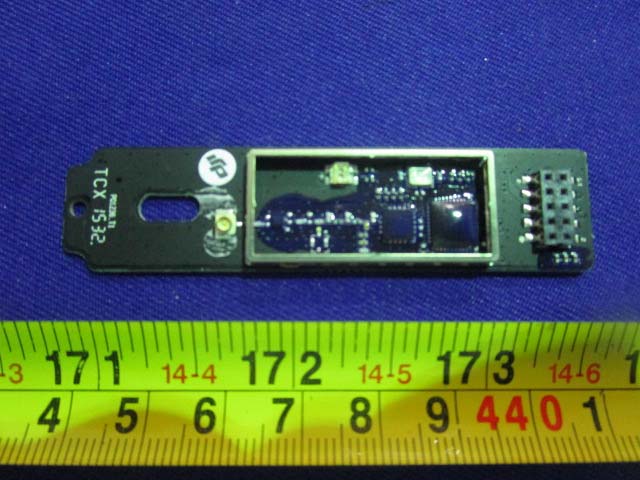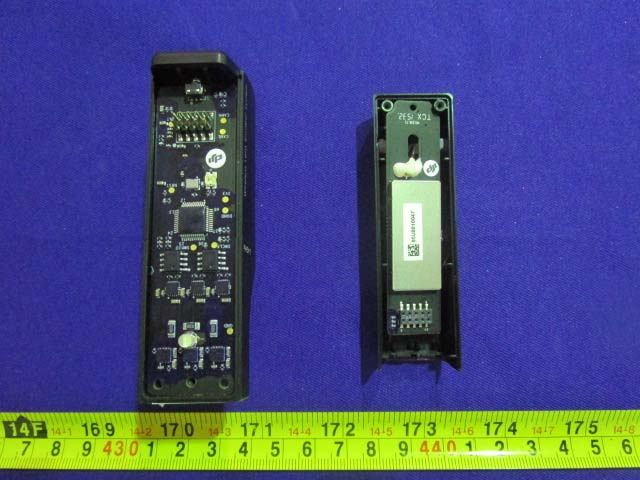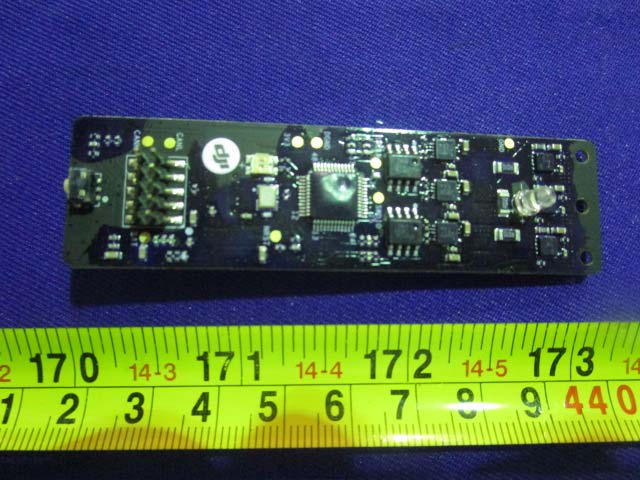Introduction
The DJI Focus, developed by SZ DJI TECHNOLOGY, is an advanced wireless follow-focus system designed primarily for precise camera lens control. Built to meet the demanding requirements of professional filmmakers and videographers, this device offers exceptional control accuracy and reliability in various filming scenarios. Certified under FCC ID SS3-FM071509, the DJI Focus adheres strictly to the Federal Communications Commission’s electromagnetic interference standards, making it fully compliant and legal for sale across the United States.
FCC certification is critical as it ensures the device has undergone rigorous testing for RF emissions, electromagnetic compatibility (EMC), and safety. Although no specific grant date is listed, the FCC ID SS3-FM071509 indicates that the DJI Focus has satisfied all necessary regulatory criteria. In this article, we’ll explore the DJI Focus’s key specifications, wireless technologies, internal hardware components through a detailed teardown analysis, and regulatory insights derived from its FCC filing.
Key Features & Specifications
The DJI Focus is designed to provide filmmakers with precise and smooth control over camera lenses, enhancing creative possibilities and efficiency on set. While official detailed specifications are limited, typical expectations for such a device include:
- Wireless Control: Allows remote adjustment of lens focus, aperture, and zoom.
- High Precision Motors: Ensures smooth, jitter-free movement even in minute adjustments.
- Compact and Ergonomic Design: Facilitates ease of use and portability in various filming environments.
- Battery-Powered Operation: Provides flexibility and mobility during shoots.
- Robust Build Quality: Ensures durability and reliability under demanding conditions.
Given the nature of the DJI Focus, we expect the internal hardware to include advanced microcontrollers, RF modules, precise motor drivers, and power management circuitry, all optimized for low power consumption and high performance.
Operating Frequencies
According to its FCC filing (FCC ID SS3-FM071509), the DJI Focus operates on the following frequency range:
| Frequency Range (GHz) | Output Power (mW) | FCC Rule Part |
|---|---|---|
| 2.415-2.473 | 11 | 15C1 |
This frequency range aligns closely with standard 2.4 GHz wireless technologies like Bluetooth and Wi-Fi, providing reliable short-range communication and adherence to FCC standards.
Technology Deep Dive
The DJI Focus’s operational frequency suggests it likely employs Bluetooth or proprietary RF communication protocols within the 2.4 GHz ISM band. Operating at 11 mW output power, it achieves a balance between effective communication range and minimal power consumption. This frequency range is ideal for stable, interference-resistant wireless control solutions, providing reliable operation in environments with moderate RF congestion. The relatively low output power ensures battery efficiency, extending operational time, crucial for film sets and outdoor shoots.
In-Depth Internal Component Analysis / Teardown
The internal components of the DJI Focus reveal careful engineering for precision control and robust operation. Below, we dive into a detailed analysis of individual PCB images and their components.
The PCB demonstrates a compact, efficient layout typical for precise control applications. Several ICs likely include a microcontroller or signal processing chip, essential for real-time control tasks. A metal shield partially covers sensitive components, providing EMI/RFI protection crucial for maintaining signal integrity. The visible multi-pin connector facilitates easy integration with other device modules, while the small passive components suggest careful signal conditioning and filtering. Overall, the build quality is robust, emphasizing reliability and compactness for demanding professional scenarios.

A more densely packed PCB reveals a central microcontroller or SoC at its core, likely responsible for primary processing tasks. The presence of differential trace pairs indicates high-speed digital signaling, essential for responsive control. An integrated PCB or chip antenna suggests onboard RF capabilities, aligning with the device’s 2.4 GHz operational band. The inclusion of capacitors and inductors highlights careful power regulation and filtering, critical for stable wireless communication and control accuracy.

The underside of another PCB lacks visible mounted components, focusing instead on clearly labeled test points such as ‘TX’, ‘RX’, ‘GND’, and ‘VCC’. These points suggest diagnostic and programming capabilities, allowing technicians to interface directly during manufacturing or servicing. The elongated PCB shape and gold-plated pads indicate a connector or interface board role, essential for linking different device modules. The straightforward layout highlights practical design choices aimed at easy maintenance and reliability.

Another internal PCB demonstrates modular design principles, evident from an FPC/FFC connector for flexible interfacing. Several capacitors suggest robust power stabilization, essential for precise IC operation. The multi-layer PCB construction, indicated by visible vias, allows complex routing in a compact footprint. The absence of visible RF components suggests this particular board handles signal processing or internal communication tasks rather than direct wireless transmission, reinforcing a modular, specialized internal architecture.

A final PCB showcases a centrally positioned microcontroller or SoC, supported by secondary ICs likely performing amplification or signal conditioning roles. The dense component arrangement emphasizes compactness, critical for handheld or camera-mounted use. The lack of visible antennas or RF shielding on this particular board suggests its primary function relates to internal data processing or control signals rather than direct RF communication. The integrated LEDs likely serve as status indicators, enhancing user feedback during operation.

Regulatory Insights & FCC Filing
The FCC ID SS3-FM071509 confirms the DJI Focus’s compliance with rigorous US electromagnetic interference and RF emission standards, certifying it safe and legal for consumer and professional use. While no specific grant date is provided, the FCC filing typically includes comprehensive test reports detailing RF exposure, electromagnetic compatibility, internal and external photographs, schematics, block diagrams, and user manuals. Such filings provide transparency and assurance of the device’s safety, quality, and adherence to industry-standard best practices in RF technology deployment.
Potential Use Cases & Target Audience
Given its precise wireless control capabilities, the DJI Focus is ideal for:
- Professional Filmmakers: Offering accurate lens control for film productions, commercials, and documentaries, enabling smoother camera movements and precise focus pulls.
- Broadcasting Professionals: Providing reliable remote lens adjustments for live events or studio shoots, enhancing production efficiency and camera operation flexibility.
- Videographers and Content Creators: Allowing creative flexibility in dynamic shooting environments, from weddings to music videos, where precise focusing significantly enhances visual storytelling.
Conclusion
The DJI Focus by SZ DJI TECHNOLOGY (FCC ID SS3-FM071509) is a sophisticated wireless lens control system designed for precision and reliability in professional filmmaking and broadcasting applications. Its FCC certification underscores adherence to stringent RF emission and safety standards, ensuring legal compliance and consumer confidence. Through our detailed teardown and internal analysis, we’ve observed a robust, modular design emphasizing precision control, power efficiency, and reliable wireless communication. As filmmaking technology evolves, devices like the DJI Focus remain indispensable tools, empowering creators with greater control and creative freedom on set.